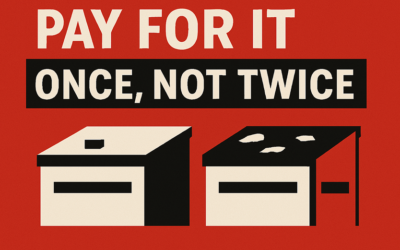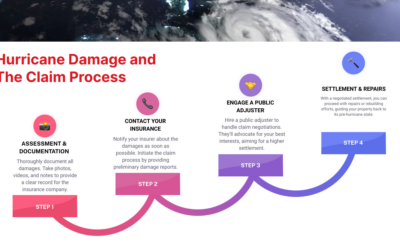
Commercial Roof Maintenance Tax Tips
Learn how commercial building owners can receive big tax breaks for roof maintenance & repairs
The IRS issued regulations in 2014 outlining detailed rules for how repairs and maintenance expenses are deducted. The tangible property regulations affect all taxpayers who improve, repair, or dispose of tangible property and provide a framework for distinguishing deductible costs from costs that must be capitalized. Now that we’re in the thick of tax season, there’s no better time to revisit these regulations to make sure property managers are saving, not losing, money on their roof maintenance this tax season.
When it comes to taxes, repairs are better than capital expenditures. The entire cost of a repair is deductible in a single year. But if a repair increases the value of the property, extends its life, results in a betterment to the property, restores or adapts it to a new or different use, then the expense is capitalized and depreciated over several years, sometimes as much as 27.5 years. All direct and indirect costs of an improvement, including otherwise deductible repair costs incurred by reason of an improvement, must be capitalized.
- Repairs are regularly recurring activities of the type you would expect to perform;
- The repairs result from the wear and tear of being used in a trade or business;
- The repairs are needed to keep the property operating efficiently in its normal condition;
- And it’s fully expected that the repairs would need to be performed either:
- More than once during a 10-year period (for buildings and structures related to buildings), or
- More than once during the property’s class life (for property other than buildings).
(Class life refers to the number of years over which the IRS expects us to depreciate property. This is outlined in Publication 946, How to Depreciate Property, especially the property class section of chapter 4 and Appendix B.)
DETERMINING DEDUCTION VS. CAPITALIZED EXPENSE
- For each repair or maintenance expense, determine what needs to be deducted vs. capitalized by doing the following:
- Review the invoice for the expense
- What is the expense for? Apply the BRA test: is the expense a betterment, a restoration or an adaptation?
- How much is the expense?
- Is each item on the invoice equal to or less than $2,500? Is the total invoice equal to or less than $2,500? If so, consider using the de minimis safe harbor.
- Is the amount equal to or less than $10,000? Equal to or less than 2% of the unadjusted basis of the property being repaired? If so, consider using the safe harbor election for small taxpayers.
- What is the nature of the repair? Is the repair an expected and necessary part of keeping the property in ordinary efficient operating condition? If so, consider using the safe harbor for routine maintenance.
- Consider whether one can write off a “partial disposition.”
- Capitalize any expenses as needed and set up a depreciation schedule for writing off the repair expense.
Typically, if the percentage of the major component replaced is less than 30%, it can be considered a repair. Anything greater than 40% is usually an improvement (30-40% should be evaluated based on the circumstances of the project).
HOW TO MAKE IT A REPAIR
To make sure your expense is considered a repair and not an improvement, here are a few suggestions:
- Patch, mend or fix things that are broken, instead of replacing them. If the roof is leaking or damaged, repair or replace only the damaged area instead of replacing the whole roof.
- Upgrades are improvements. – When you fix something that is broken you should use the same quality materials and parts it contained originally.
- Document repairs. – Document tenant complaints showing that something was broken and had to be fixed; get an invoice for every repair (make sure it does not contain wording indicating an improvement such as “renovation” or “rehab”); make sure all repairs are documented as such in accounting records; take before and after photos of extensive repairs.
- Keep up with preventative maintenance. – Preventive maintenance costs are always currently deductible operating expenses.
Remember: Always consult with a Certified Public Accountant regarding tax deductions for your roof or property.
Should you have any questions regarding roof maintenance and repairs for tax deductions contact us today. We have friendly roofing experts standing by ready to help.
Tags:
You may also like
Pay for It Once or Twice: The True Cost of Choosing the Wrong Roofing Contractor
In the fast-paced and weather-challenged environment of Florida, choosing the right commercial roofing contractor isn’t just a financial decision—it’s a critical business investment. Property owners and facility managers often find themselves focused on one thing:...
Roofing Price Increase in Florida: What You Need to Know in 2025
Roofing Price Increase in Florida: What You Need to Know in 2025Several economic and trade-related challenges are causing roofing material costs to rise in Florida and across the U.S. Here are the three most significant factors:The ongoing trade tensions between the...
Hurricane Damage and The Claim Process
Hurricane Damage and The Claim Process If your commercial property has experienced hurricane roof damage, planning a comprehensive recovery strategy is essential to ensure your building returns to its pre-storm condition. At Advanced Roofing, we specialize in...



